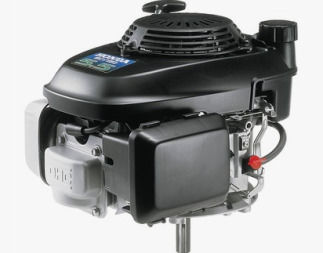________________________________________________________________________________________
| Home / Engines / Honda Engines / Honda GCV160 |
Honda GCV160 Troubleshooting

| Engine Model: Honda GCV160 |
| Engine Type: 4-cycle overhead camshaft 1-cylinder air-cooled gasoline |
| Total Displacement: 9.8 cu.in (160 cc) |
| Rated Engine Power: 5.5 Hp (4.1 kW) at 3600 rpm |
| Fuel System: Horizontal carburetor with butterfly valve |
| Engine starts up hard or won't start |
Empty gas tank - Add gasoline.
Low-quality gasoline - Use correct fuel grade.
Dirty fuel system - Check and clean.
Spark plug wiring connection is defective - Inspect spark plug wiring connection, change or repair.
Damaged spark plug - Replace spark plug.
Dirty fuel filter - Fuel filter needs changing.
Faulty safety switch - Change damaged switch.
Problems with carburetor adjustment - Adjust as required.
Poor cylinder compression - Check cylinder block and change worn parts.
Throttle cable is adjusted improperly or worn - Adjust correctly or change the cable.
| Unstable engine running |
Air intake grill is clogged - Clean and wash as required.
Ignition system malfunction - Test ignition and replace failed parts.
Throttle cable is defective or stuck - Change or clean the cable.
Plugged air filter - Change or service air filter.
Fuel pump is damaged or dirty - Service or change fuel pump.
| Engine starts but then shuts off |
Spark plug is damaged - Change spark plug as required.
Faulty or clogged carburetor - Replace or service carburetor.
Ignition coil is damaged - Install a new ignition coil.
Valve springs are bad or broken - Install new valve springs.
Stuck valves - Clean the valves.
| Engine overheats |
Low engine oil level - Fill the crankcase with engine oil.
Engine overloaded - Load reducing is recommended.
Plugged cooling fins - Clean and wash as required.
Carburetor fuel mixture is too lean - Set the carburetor correctly.
Bad ignition timing - Set the ignition timing correctly.
Valve setting is wrong - Adjust valves as required.
| Engine knocks or noises |
Stale gasoline - Change fuel.
Engine overloaded - Load reducing required.
Not enough engine oil - Check oil level and add oil as required.
Improperly adjusted low idle speed - Correct idle adjustment.
Fuel pump is faulty or clogged - Test fuel pump and change if necessary.
Crankshaft or main bearings wear - Need to install new components.
Excessive valve clearance - Adjust to proper valve clearance.
Damaged piston rings or cylinder bore - Change defective parts.
| Engine power is insufficient |
Incorrectly adjusted or clogged carburetor - Service or properly adjust carburetor.
Plugged air filter - Change or service air filter.
Fuel pump is damaged or dirty - Check fuel pump and replace if necessary.
Defective ignition system - Check ignition and replace faulty components.
Cylinder head gasket is worn - Install new head gasket.
Burned or stuck valves - Clean or change valves.
Push rod is worn or bent - Change push rod.
Faulty cylinder block components - Defective parts need to be replaced.
Clogged oil filter (if equipped) - Clean or replace oil filter.
| Engine using too much gasoline |
Choke did not open fully - Change or adjust choke cable.
Incorrect carburetor main jet adjustment - Adjust it properly.
Defective or loose spark plug - Tighten or change the spark plug.
Stuck, burned, or worn valves - Clean or change valves.
Worn piston, rings, or sleeve - Replace defective parts as required.
Valve clearance is not correct - Check and adjust.
| Excessive engine oil consumption |
Worn gaskets or seals - Change worn parts according to specifications.
Valve stems or guides are damaged - Install new valves.
Stuck or worn piston rings - Piston rings need to be replaced.
Worn piston or cylinder liner - Check piston and liner, install new parts as required.
Breather hose or pipe is blocked - Clean or change.
________________________________________________________________________________________
________________________________________________________________________________________
| Engines Technical Specifications |
